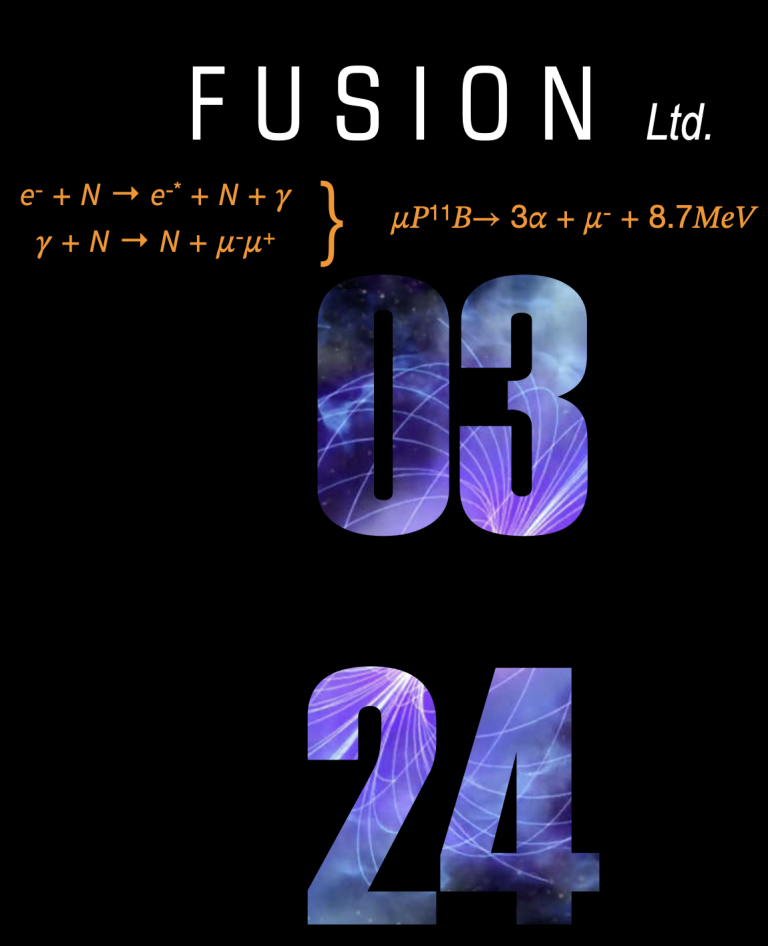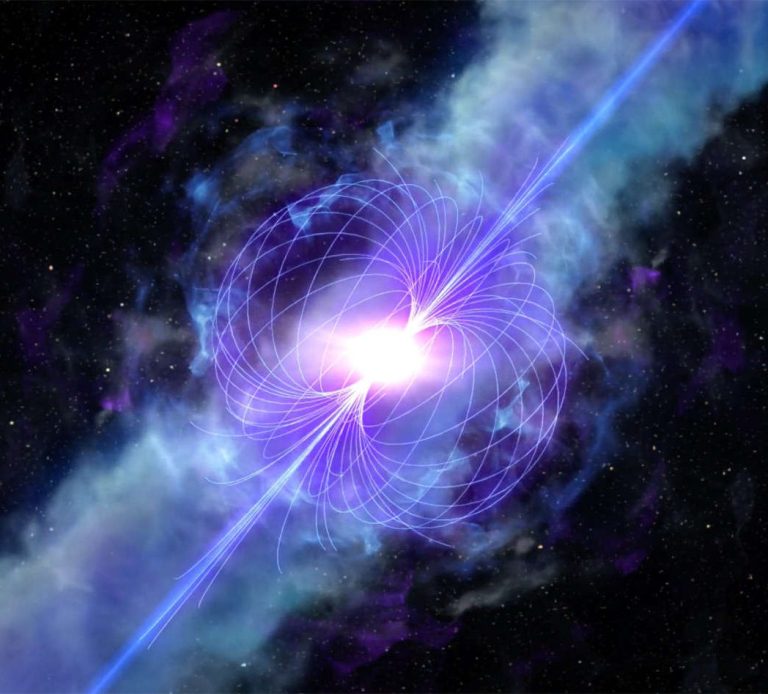News
The "Magnetar" prototype reactor has enabled the proof of fusion. The machine is kept online to produce commercially available 3-He (Helium-3). First shipments expected April 2024.

Democratising
nuclear fusion
and energy delivery, globally.

Mission Statement
To provide, quantum, aneutronic fusion energy, globally, without the need for an energy infrastructure
Fusion
Science
The evidence
Nuclear fusion has been around since even before nuclear fission, and was practically demonstrated under various forms since the 1950’s. The hard part is not to generate fusion, but to turn it into a long term reliable source of net power.
Only a quantum mechanical approach can be succesful here.


Types of Nuclear Fusion Technology
Magnetic Fusion
Magnetic fusion is basically trying to replicate the fusion conditions of the sun on earth. But without the gravity thereof. On earth this means using powerful magnets and very high temperatures to achieve fusion by a “brute force” approach. Fusion literally means bringing ions together, releasing important amounts of energy. The problem being that, as they get closer to each other, these ions start repelling each other also. It takes tens of millions of degrees and magnetic fields several orders of magnitude higher than that of a standard IRM, to achieve said condition.
Even then, it is very hard to maintain a plasma in said conditions, for prolonged periods of time.
An example of this approach are the international JET, ITER and DEMO “Tokamak” reactors.
Inertial Fusion
Here the approach is mostly to use lasers or projectiles to compress a target to the point of fusion. It is also considered a brute force approach but easier to achieve than the magnetic fusion approach. One issue here however is that this approach relies on little pellets of fuel, to compress. And, although this works, replacing said pellets hundreds of times per second, with sub-millimetre precision, is not yet feasible.
So, both approaches work, and have worked, for decades, in a lab, but failed to generate commercially useful power generation. That is because they ignore the fundamental quantum mechanical character of nuclear fusion. In comes the "Magnetar" quantum fusion reactor

Our approach
Fusion Ltd. research departed from the traidtional viewpoints above, as they fail to take into account the fundamentally quantum nature of nuclear fusion.
A “quantum” fusion reactor uses a molecular level construction of a quantum state system, with growing complexity, entropy and a high level of entanglement. By shifting the view of fusion events to “gates” in a quantum complex system, energy in the system is quasi infinite and depends on the “observation” of the system, to extract any given fusion yield.
Complexity being similar to entropy and gravity (ER=EPR), the system can sustain itself in a self generated spin and magnetic field, with over 2.5 times the density and relative gravity of our sun, without breaking the Oppenheimer TOV limit, allowing for maximum quantum tunnelling, and therefore; actual fusion.
In short, where traditional fusion approaches rely on a random “bulk and see” approach, a quantum reactor controls every aspect of each single ion injected into the system, to “prepare” the fusion states and growing complexity, for observation (power out). It does this at a fraction of the input energy required, cost, and volume. By controlling the spins and quantum states of every injected ion, the fusion yield is not a variable but a predetermined state of the “experiment”, and therefore, can be observed through its entanglement without any statistical uncertainty in its density matrices.
The “Magnetar” quantum fusion reaction realises 2 GW of yield in a volume of 1 cubic meter, compared to the projected 500 MW in ITER for 880 cubic meter of reactor volume, at a fraction of the cost. The move away from a classical physics, to a quantum physics approach, gives this type of reactor the potential to obtain Terawatt levels, in a reasonable and economically viable form factor.
The "Magnetar", a new concept for nuclear fusion
“Nuclear fusion will be ready when humanity needs it, maybe a short time before that”
Lev Artsimovich - USSR - Father of the Tokamak
Approaches to nuclear fusion are as varied as the palette of a van Gogh painting, and, although they work, they have failed - so far - to generate a commercially viable reactor.
Our approach was different, use the best ideas in every individual approach to generate a power source, the likes of which the world had never seen before. Not a Tokamak, not an FRC, not a Z-Pinch nor a stellarator or laser inertial system.
Our system uses the strongest arguments of every individual approach rather, and created something new; a “Magnetar”.
This generated the world's first "quantum fusion reactor", an entirely new type of fusion device.
The end result is that our composite reactor design has the following yield characteristics, material sciences allowing:
Fusion Yield “Q”: - 2000 (times more energy out, than energy in)
Magnetic Field: > 42 kilo Tesla
Plasma Temperature: - 150 KeV (>1 billion degrees C)
Pressure inside the quantum plasma: - 13,6 GigaBar
Density inside the quantum plasma: - 10E30 particles / cm3
Total possible energy delivered: - 2 GW initially, potential to 1TW
Fusion mechanisms:
- Quantum controlled at the individual ion level
- Wave function enabled quantum tunnelling
- Pre-determined quantum states, complexity and entropy
There is only one other system in our universe that has similar characteristics, a very special kind of neutron star; the “Magnetar”, hence the name for our reactor design.

The Fusion "Magnetar" is the closest to an actual neutron star that can be achieved on earth.

Wireless Energy Delivery
What costs the most in producing energy? Infrastructure for one. A nuclear power plant takes decades to build and certify. Next up is the grid that one uses to get the electricity form A to B. It may sound surprising but a traditional high voltage line only has a reach of around 450 km. And a nuclear, coal or steam power plant itself already has 50% energy loss, before the electricity is even generated.
Meaning that, by the time you put your kettle on, you are using “maybe” 20% of the energy that was put into the system. But you are still paying for the other 80%.
Now, the initial stages of QET (Quantum Energy Transportation) have become possible and hold the potential to change the energy landscape forever.



Quantum Entanglement as an Energy Delivery System
Einstein called this “spooky science at a distance” in the 1930’s. Here is what happens:
If you generate 2 identical particles (usually photons or electrons although this has evolved since and can be done with different materials nowadays), with the same orientation, spin, and time of life. These particles will be “twinned” forever. And, whatever happens to one, happens to the other.
Meaning that even if both particles are thousands of miles apart, they will act the same and whatever happens to one? Happens to the other.
With one caveat, and this one is hard to get your head around but; if you would “observe” the second particle, the first one disappears, it “dies” so to speak.
This concept has been proven many times over between ground stations and satellites and is used in modern encryption techniques as it is impossible to hack or fake (remember, as soon as you “observe” you destroy the particle).
But to transport electricity, this is ideal as it doesn’t to require “beams from space” or large radio-frequency towers as Tesla originally envisioned.
Instead, we use a synchronised and quantum entangled state between the power station and the receiver, via fibre optic or satellite internet for example. Once a “entangled” state has been achieved, we amplify the original particles, usually photons, to generate a powerful bridge between them. This allows the injection of electrical current into the point of origin, which will be delivered to the end user, without any delay or loss. And, as long as the entangled state exists, power is transferred.
For now we focus on power delivery but future applications are limitless; an aircraft without power source but simply electrical engines, your EV charging as it drives, even propelling spacecraft. The technology is barely in its infancy but lossless, democratised power delivery, is the low hanging fruit.

What are the Costs?
A single global tariff
Fusion energy, combined with a quantum entanglement delivery system, is the most efficient energy source on earth, its fuel abundant, technological and environmental risks low to non-existent. Therefore, this energy is not only green and renewable, but cheap.
While each country has its own rates, depending on grid contracts, utility providers etc, a globally democratised system needs only one. The global target price for Fusion Ltd. energy is
Bullk Cost = 0.01 USD / kWh
So How does it work?
Users rent entanglement terminals, suited to their power rating and according to the energy slots they purchased. Energy is delivered thereafter according to the energy slots they reserved and require. Settlement is totally automatic via stable crypto systems or traditional methods. The cost per kWh is fixed in advance in the smart contract and globally competitive. Since it is completely independent from the grid, no extra costs apply. And, as it does not require any type of “beam”, no national “landing rights” apply, as is the case with satellite internet for example.
Setting up the system is equally simple as all that is required is a high speed internet link, no external power or “Line of Sight” (LOS), the unit can be placed anywhere although a technical room or roof mount is recommended.
Fusion Ltd. is going into Beta testing in April of 2024 and we are interested to find global Beta testers to perfect and develop the systems and the power delivery protocol, across various continents. Commercial power deliveries will start at low rates to subscribers of the available power slots.

mar
2024

Timeline and Roll-Out
Beta Testing and low initial production
In the initial roll-out phase of low initial power production, power slots will made available to commercial and individual clients in the following standard power ratings:
50 kWh (household)
Commercial slots per annum
Retail: 25 kWh / m2
Hospitality, Food service: 56 kWh / m2
Manufacturing: 100 kWh / m2
After the 6 month long validation of Beta testing and production rates of the quantum entanglement units, slots will be commercially available globally.
© Copyright. All rights reserved.
We need your consent to load the translations
We use a third-party service to translate the website content that may collect data about your activity. Please review the details and accept the service to view the translations.